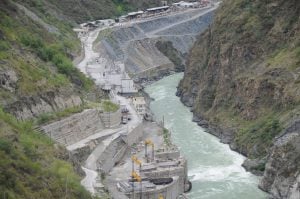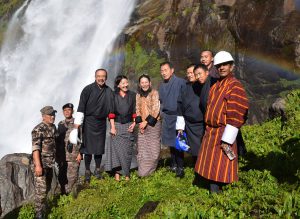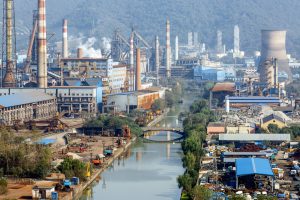For decades, the social change discourse has been dominated by the idea that lack of access to modern ‘education’ and the resultant ‘non-integration’ of societies into mainstream is pivotal in the continuation of various socio-economic and political challenges. And this argument is rarely ever re-examined, by our social ‘engineers’, be they in the academia or grassroots practice, for a multitude of reasons, the primary being that it would mean that they may have to stop peddling the wheels of the system and consider a serious reinvention. However, not engaging with this debate is a choice that is posing barriers to the process of transformation.
If you wanted to change a culture in a single generation, how would you do it?
You would change the way it educates its children.
Carol Black, a writer and filmmaker, director of the documentary film Schooling the World
A commonly held premise that ‘education’ holds the key to a more harmonious, sustainable and equitable society needs to be questioned in the wake of the serious ecological crises, especially in vulnerable geographical and rural regions like the Himalayas for instance. Education, referred to here is as it is commonly understood today, the ‘knowledge’ gained through modern systems and institutions, namely schools and university. It includes a downloading of information on a wide range of subjects, with the ultimate aim of leading the ‘pupil’ towards specialisation to fit into professions and occupations that are valued in the modern world, economically and socially.
It is true that modern science, technology and education has enabled us to measure and quantify the rapid loss of biodiversity and natural ecosystems, but that has not necessarily led to their preservation. On the contrary, in the last 150 years, running parallelly with the story of modern living – of which education is an essential part – in industrial economies is the saga of environmental destruction. We already know the correlation there. Yes, better life expectancy and health facilities are the gifts of modern science, but today more than ever, people have lost control over their bodies, their food diversity and sovereignty, their local healing systems, and there is a vast majority unable to access health care to deal with modern epidemics.
The Indian Himalayan region is seeing a myriad of ecological, socio-economic and political conflicts and challenges, and somehow increasing literacy levels or education is not providing the answers we urgently seek.
Let us take a specific issue – gender inequity and inequality and a basic indicator like male to female sex ratios. In 1901 there were 3.2 million fewer women than men in India – a hundred years later the deficit increased over 10 times to 35 million at the time of Census 2001. The most disturbing decline is seen in the age group 0-6 years clearly indicating either female foeticide, or the malign neglect of the health of young girls. The sex ratio (number of girls for every 1000 boys) within this age group plunged from 1010 in 1941 to 927 in 2001. The sex ratio in the age group 0 – 6 years plunged from 1,010 in 1941 to 927 in 2001 and this went further down to 919 in 2011. And this is the period when universal education is rising.
Himachal Pradesh, a western Himalayan state of India, with a relatively high female literacy rate – the best in the country, especially amongst women – has now been bracketed among the 10 states having the worst sex ratio in the country. If we look at the worst performing district it is Una, with a sex ratio of 875. The district with the best, and actually a positive sex ratio – 1033, is the remote tribal region called Lahaul Spiti. Interestingly, the latter has only 66% literacy rate amongst females, whereas Una had crossed 80% female literacy as per the 2011 census.
The proliferation of the ‘ultra-sound’ technology, and its relatively easier access to the ‘urban educated’ is one of the drivers but the more systemic issue is of deepening of patriarchal beliefs and practices despite education. So, why do we still continue to see education as a panacea for gender equity, or for that matter any form of equity?
The questioning around ‘education’ itself needs to happen at two levels. One, is about the nature and relevance of the current education and whether it provides the perspectives on the socio-political reality. At a more fundamental level, political and philosophical issues need to be raised vis-a-vis who runs educations institutions, who are the creators of knowledge, what is the culture propagated by the modern education and what is the role it has played in creating new contradictions and inequities in society. The burden of carrying out this questioning lies not just with those have been instrumental in propagating ‘education’ as the solution, but those of us who are blindly following.
This is hard for the majority since the design of the entire economic system leaves little choice. Like many regions of the Global South, in India’s Western Himalayan States of Uttarakhand and Himachal, livelihood patterns have seen a rapid shift in the last few decades. Traditional occupations based on the trilogy of jangal-jamin-janwar (forests-agriculture-livestock rearing) took a beating, with burgeoning industrialisation in the plains on one hand, and dwindling agricultural growth on the other. State control over forests in the colonial period for commercial exploitation and, post-independence, for scientific forestry with the declaration of ‘protected areas’, restricted rights of predominant communities of the hills, like pastoralists. And so a deluge of youth, first and second generation learners, the ‘educated’ lot were soon pushed out of the local economy and started heading for the city and industrial towns for jobs, slowly getting alienated from the land.
See: Forest dwellers are the best protectors of the environment
It is true that many parts of Himachal have not seen the kind of out-migration as the neighbouring state of Uttarakhand, given the horticulture and commercial agriculture model as well as provision of basic services by the government, be they roads, health or education. However cultural alienation has affected the educated youth in most places, especially the majority who have not been able to find the kind of opportunities that education promised. In Himachal, a state with a population of 6.8 million, close to 900,000 young people are registered at the employment exchange. A surge in drug related crimes as well as suicide rates amongst the youth in recent times in Himachal has emerged as an indicator of the frustration they are grappling with.
Modern education, reinforced with communication technologies of television, and now the internet, may not have lived up to the promise of employment, but it has brought in consumerism. The most critical impact of this has been the growing loss of local language, folklore, dress, songs, dance, and food, all of which were extensions and manifestations of the relations between humans, as well as between humans and nature, and a crucial part of community ‘identity’ as it existed in mountain societies.
In the village that I live in Kangra, Himachal Pradesh, I often see parents immediately discouraging a child who speaks the local language, pushing them to Hindi with English words thrown in. Similar, when children play with mud in the farms or climb trees, pat comes the instruction to “go study and not waste time”. Integrating with the outdoor is seen as useless. Plonking a child in front of a television or handing them a smart phone are now the preferred tools for occupying children.
The ’educated liberal’ is not open to this critique of perils of modern education or technology because it is seen as a natural process of development. It is upheld to have freed us from the slavery of the feudal agricultural kingdoms and helped us to transition to modern nation states with democracies. But we forget that these evolved out of a history of often violent imperialism across the world. We also conveniently forget the many revolutions and uprisings, the tribulations against injustices by many communities around the world. While the world moved into the framework of the modern democratic nation state with the end of the colonial rule, it still remained entrenched in extractive capitalism. Kamla Bhasin, a senior activist and feminist from India said in a speech, “In the 70s and 80s we firmly stood for advocating literacy, for television, because we saw these as the medium that would bring change, equality. Little did we know that educational institutes would be run like factories churning out products”.
The figures on wealth inequity in today’s globalised world are unparalleled with the richest one percent taking 82% of the world’s wealth created last year. Neither modern education, nor ‘development’ have delivered what was ‘promised’. Many would say that this is a problem of implementation and governance but that is a partial reality, and a counter that may be stopping us from looking deeper and exploring newer ideas.
This is not about rejecting modern education and technology. It is about recognising its limited role in resolving the structural inequities of the world – be they of class, caste or gender. It is also about acknowledging that the cultural baggage loaded on us by our ‘education’ – of individualism, competition, achievement, accumulation and supremacy is actually widening disparities. It is about accepting the ‘educated class’, have been the key promoters of the ‘extractivist’ and ‘utilitarian’ way of life which have harmed nature the most.
We talk highly of how the young today are so ‘aware’ about the environment because they learnt a chapter or even a class on ‘Environment education’ in school. We forget that when the real connections with nature, their own community, stand broken, what will the youth fight for? The environmentalist, George Monbiot, raised this concern in an article, stating, “While the surveys show that the great majority would like to see the living planet protected, few are prepared to take action”.
Action, perhaps refers to the like taken by the ‘illiterate’ women led by Gaura Devi, from Lata and Reni villages in the Alakhnanda valley of Uttarakhand, who clung to the trees in their forests, to fight the mafia and contractors from the plains of Uttar Pradesh. The ‘educated’ urban, gaze, which views the forest and nature in general, as being outside of us, labelled this movement as a fight to ‘save the environment’. They were merely saving their own selves, the forests they had nurtured and that were helping them nurture their families. They spurred a movement across the valley for protection of forests by women, who are today the backbone of the land-based livelihood of the ruptured mountain economy. Will there be a Chipko movement in today’s Uttarakhand, of ghost villages, which are a creation of the current development paradigm and the modern education system? Perhaps, but it is uncertain whether it will be led by the educated youth, who now struggle between surviving the rat race and seeking their own identity, its lost roots.
The writer is an environmental activist and lives in Himachal Pradesh.
![<p>The pursuit of a skewed model of development have left the youth of Himachal searching for employment alienated from the land [image by: Candice and Jarrett/Flickr]</p>](https://dialogue.earth/content/uploads/2018/03/Himachal-Candice-and-Jarrett.jpg)






![man collecting firewood in Rohingya [image by: Mokammel Shuvo]](https://dialogue.earth/content/uploads/2018/03/Roh1-300x200.jpg)
